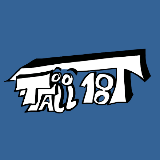Search Results (Searched for: )
- rodw

29 Dec 2024 09:05
- TooTall18T

29 Dec 2024 09:00
Replied by TooTall18T on topic LinuxCNC 2.9.x hand wheel xhc-whb04b OFF/ON problem
LinuxCNC 2.9.x hand wheel xhc-whb04b OFF/ON problem
Category: Installing LinuxCNC
Time to create page: 0.505 seconds
